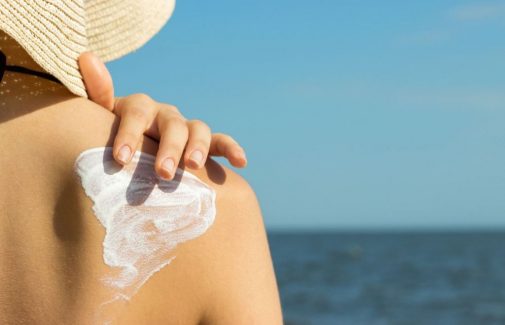Are you putting yourself at risk for skin cancer?

There are more than a million people living with melanoma of the skin in the U.S., according to the National Cancer Institute. Could you be one of them?
With skin cancer rates continuing rise, Dr. Katherine Garrity, a board-certified dermatologist at Aurora Medical Center in Summit, Wis., explains what simple mistakes you could be making.
Ignoring family history of melanoma is the first misstep.
“Family history plays a critical role in a person’s risk for skin cancer, particularly melanoma. It’s important to know if your parents or siblings have a history of melanoma because that increases your risk of having a melanoma,” Dr. Garrity says.
Thinking of hopping into a tanning bed to get a base tan before vacation? Think again. When you tan your skin, even if you don’t burn, it’s considered sun damage.
“Tanning is the body’s self-defense against ultraviolet (UV) light from the sun, so any time you tan, your body has received enough UV light from the sun to cause damage to your skin cells’ DNA,” Dr. Garrity says. “Using a tanning bed once increases a person’s risk of melanoma by 20 percent.”
When done improperly, even taking steps to protect yourself from the sun can increase your chance of developing melanoma.
“Most people think of sun protection as using sunscreen,” she says. “But there is more to sun protection, including UPF clothing, wearing wide brim hats, avoiding peak sun hours of 10 a.m. to 3 p.m., wearing sunglasses, applying lip balms with SPF, using sun/beach umbrellas/tents taking and supplements that include Polypodium leucotomos fern extract.”
Not choosing the right sunscreen or misusing the correct one has its consequences, too.
“Picking a sunscreen that is SPF 30 or higher, is broad-spectrum and is water resistant is key,” she says. “For the average adult, about a one-ounce shot glass full of sunscreen lotion/cream is what is needed to cover his/her body.”
In general, spray sunscreens tend to miss large areas of the body. Dr. Garrity suggests sticking with a lotion/cream-based sunscreen or to spray sunscreen into your hand and then apply it to your skin.
Not reapplying sunscreen can decrease its effectiveness.
“Reapplication of sunscreen is critical. Sunscreen should be applied every two hours, after swimming/water exposure and after exercise/sweating,” she says. “After the skin is wet, it should be dried thoroughly before reapplication.”
Assuming you are protected from the sun in the shade is risky, as well.
“Sand, snow, concrete and water can reflect more than half of the sun’s rays onto your skin. Sitting in the shade does not guarantee protection from sunburn. Being in high altitudes also increases your risk of burning,” Dr. Garrity says.
And, daily moisturizing and makeup products containing SPF are a great step in sun protection, but Dr. Garrity adds to “be sure to apply SPF to your neck, chest and tops of the hands and arms – these areas are exposed to UV light daily year-round.”
Related Posts
Comments
About the Author
health enews staff is a group of experienced writers from our Advocate Health Care and Aurora Health Care sites, which also includes freelance or intern writers.

















